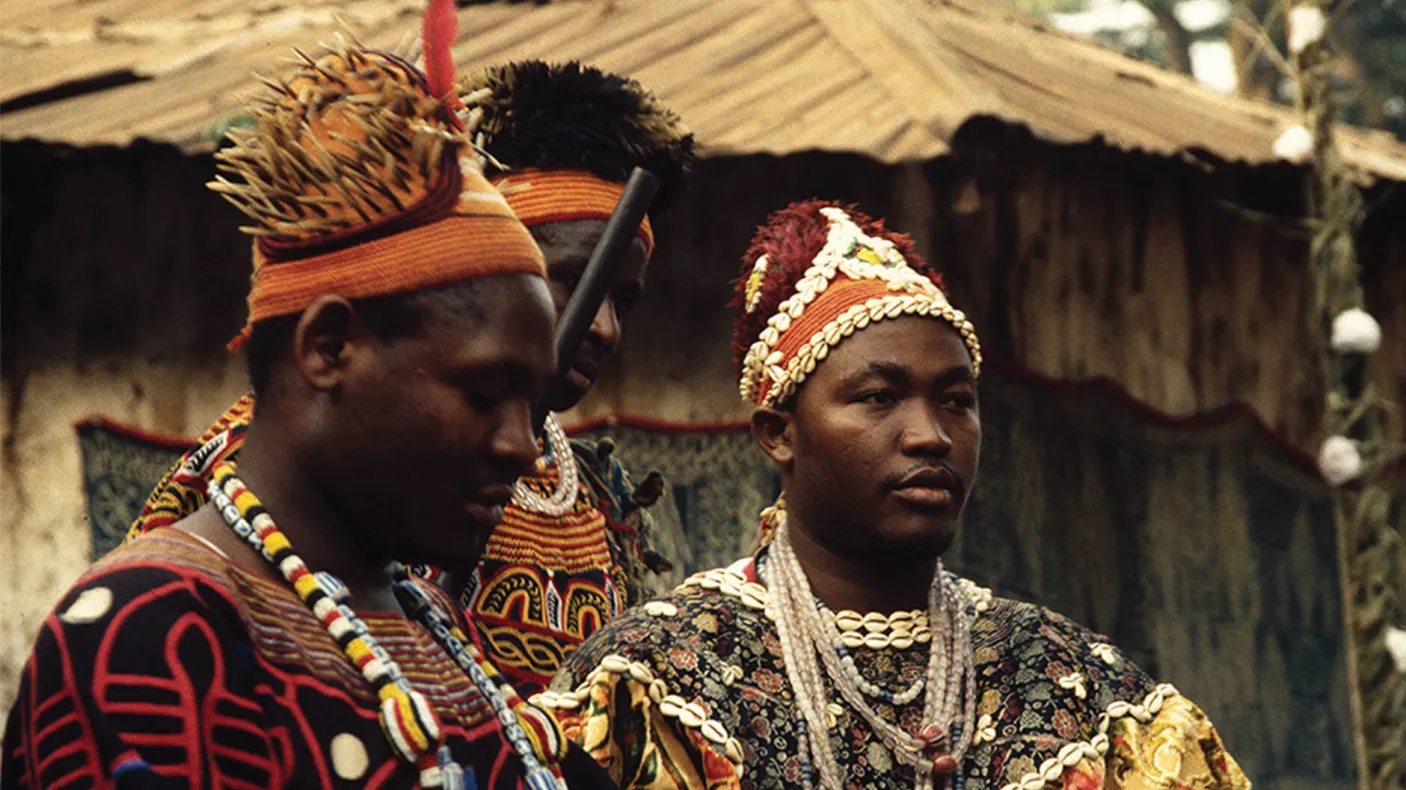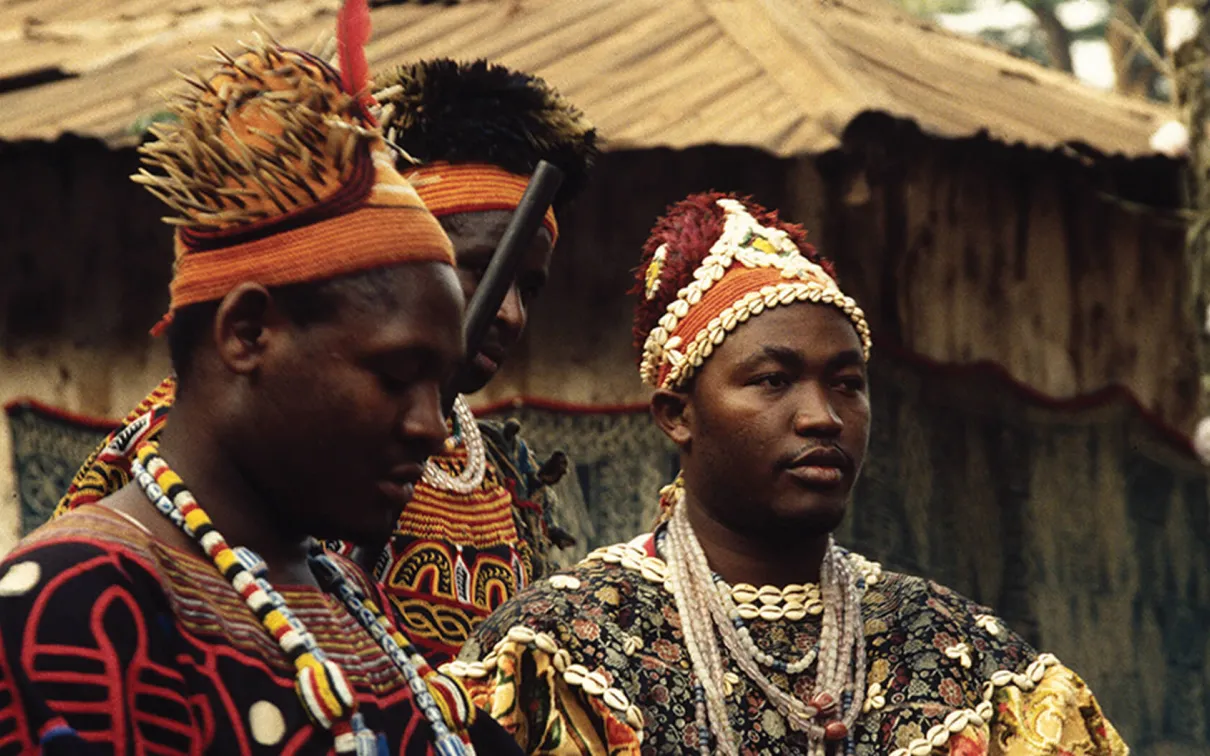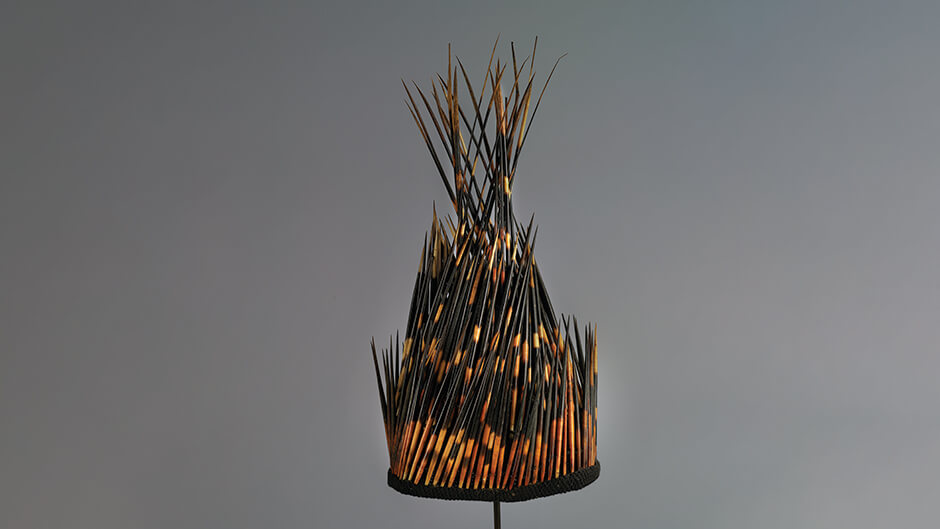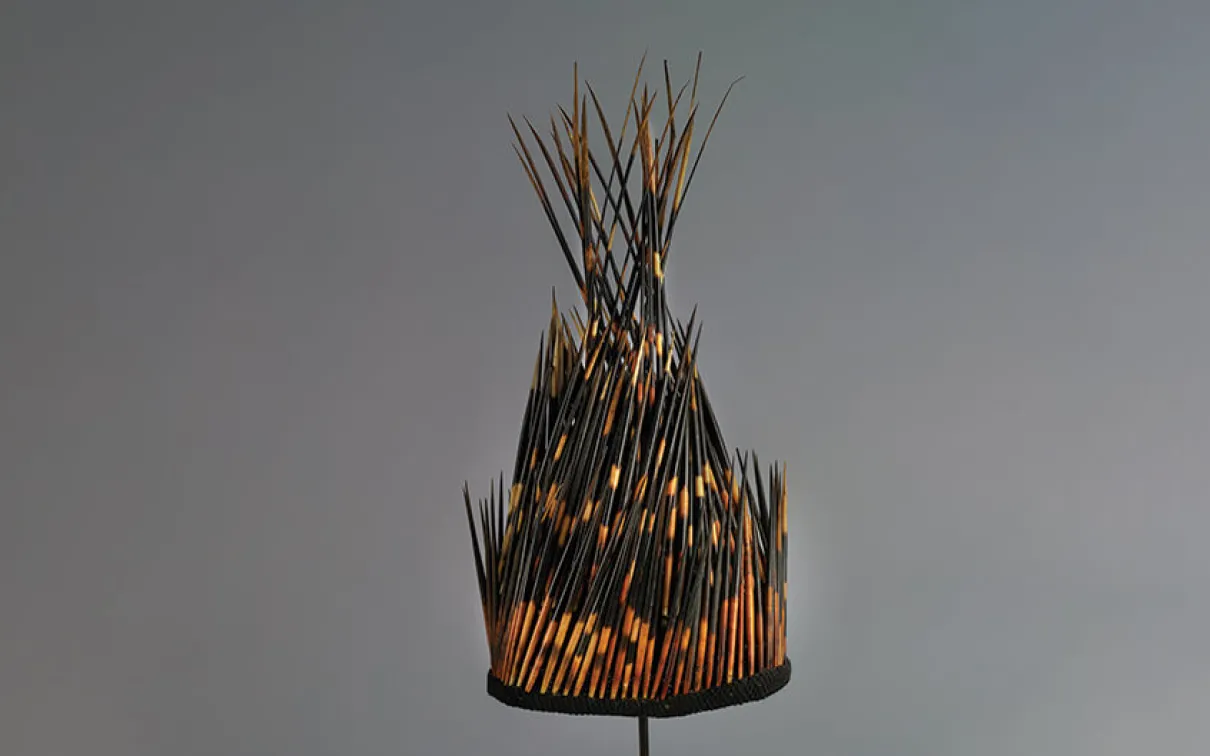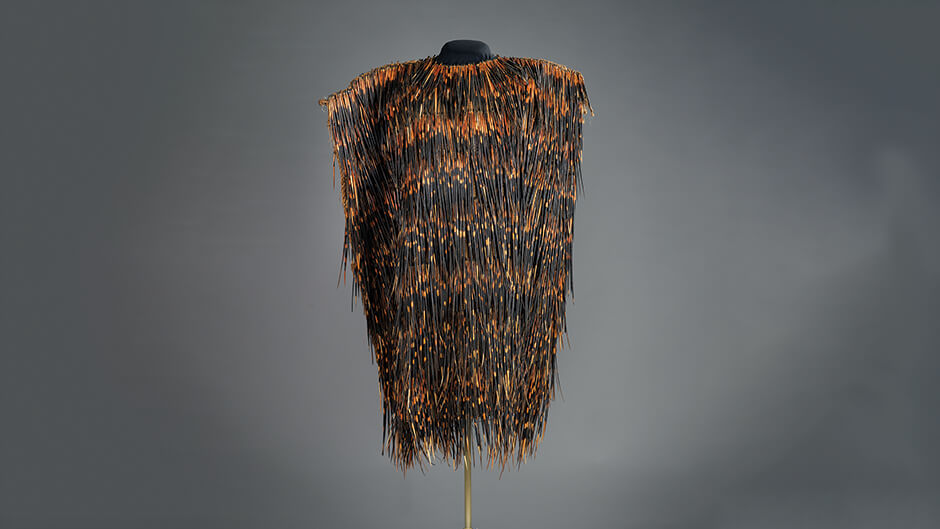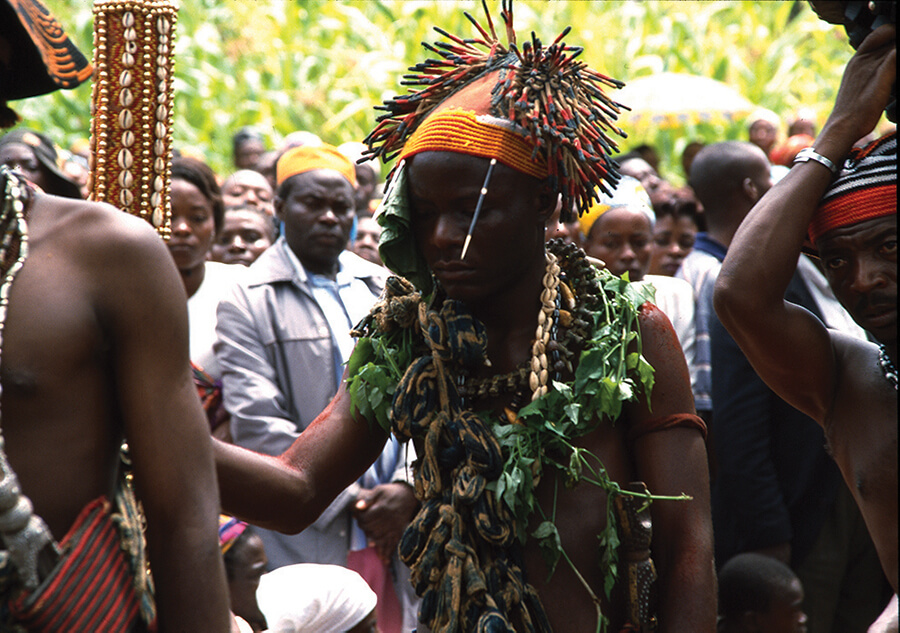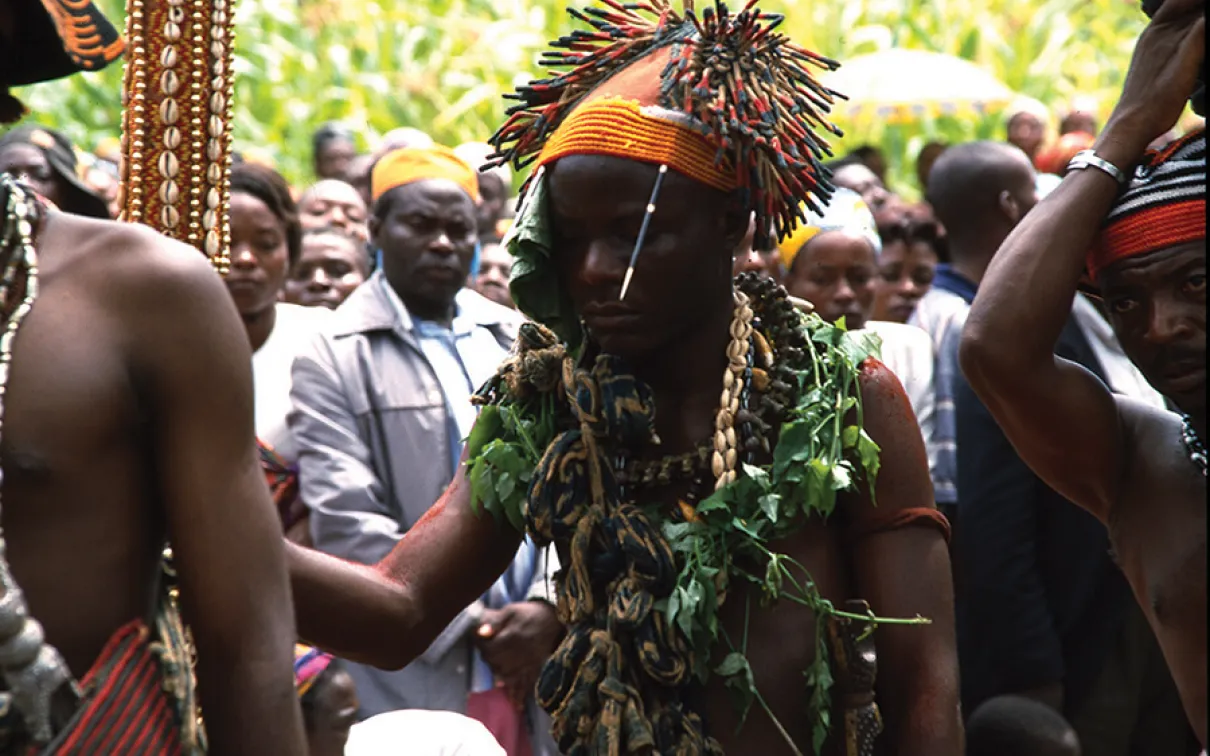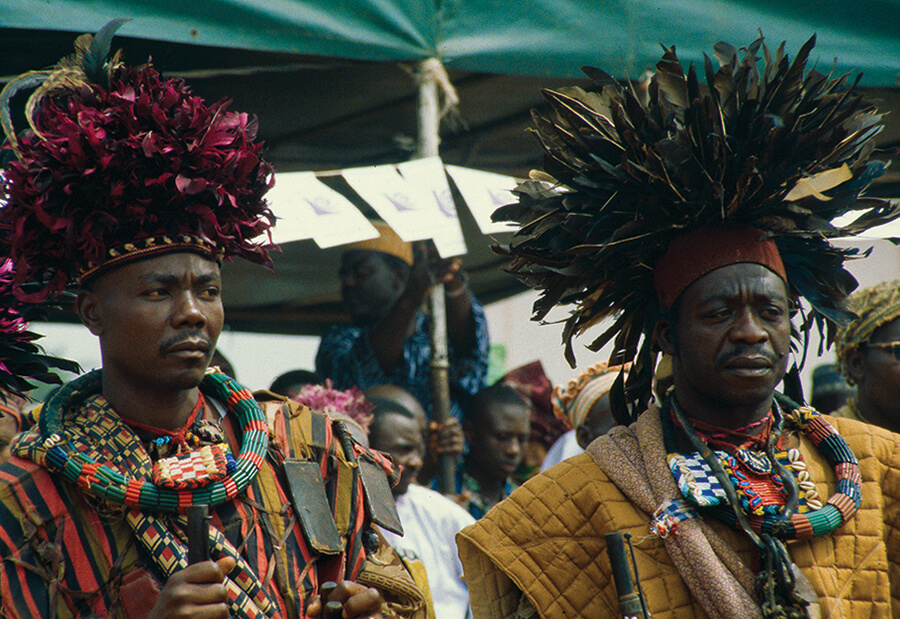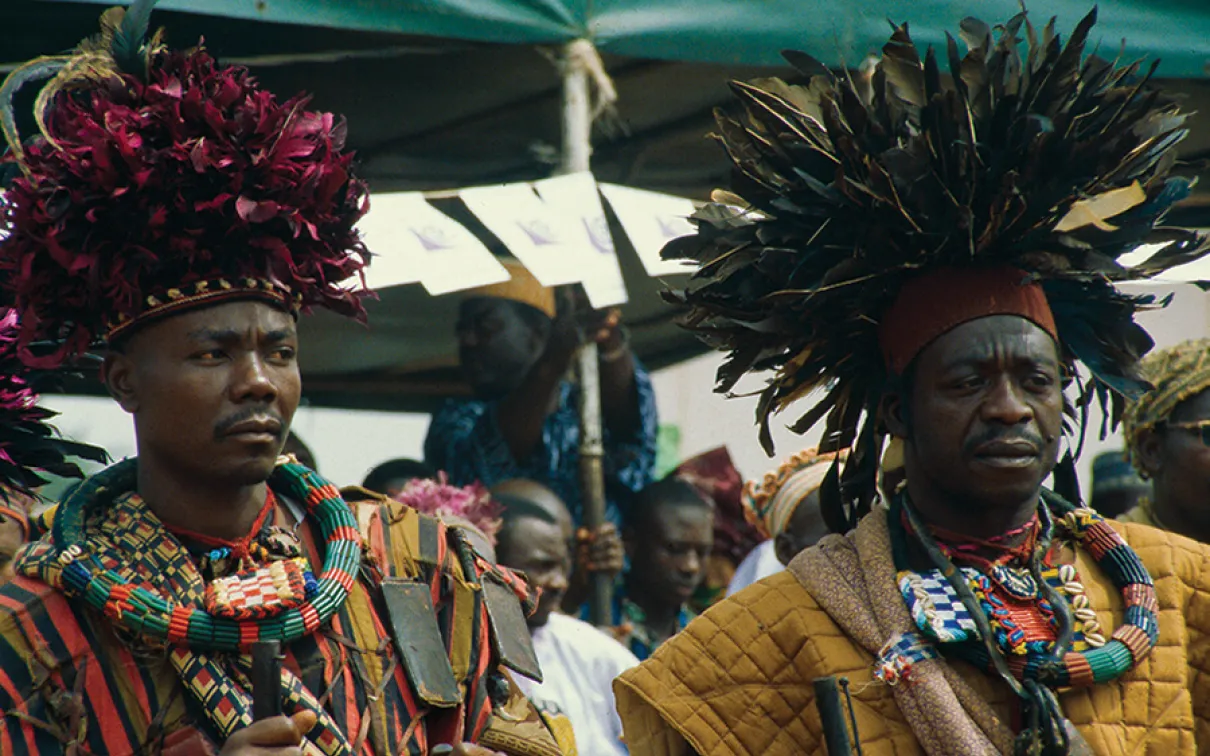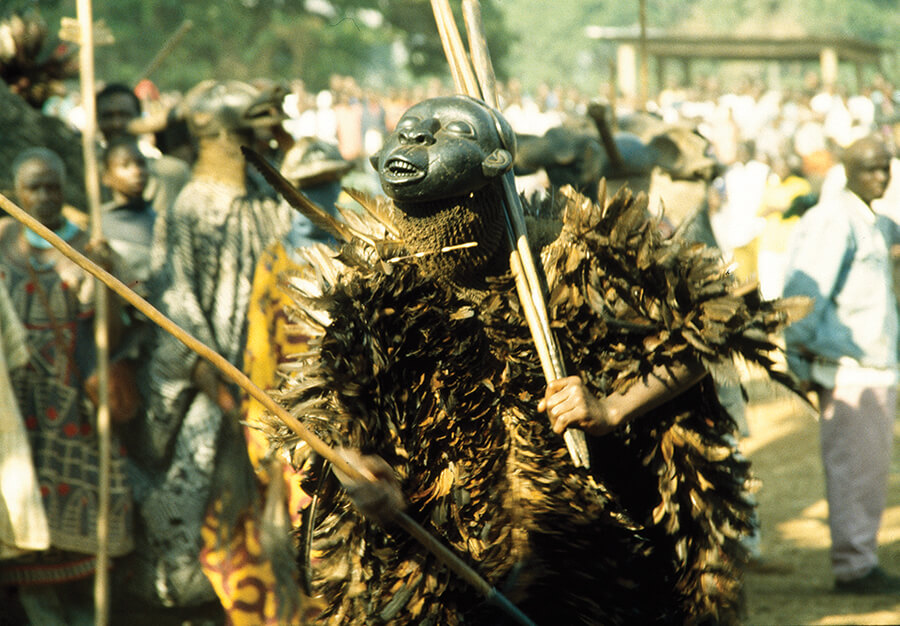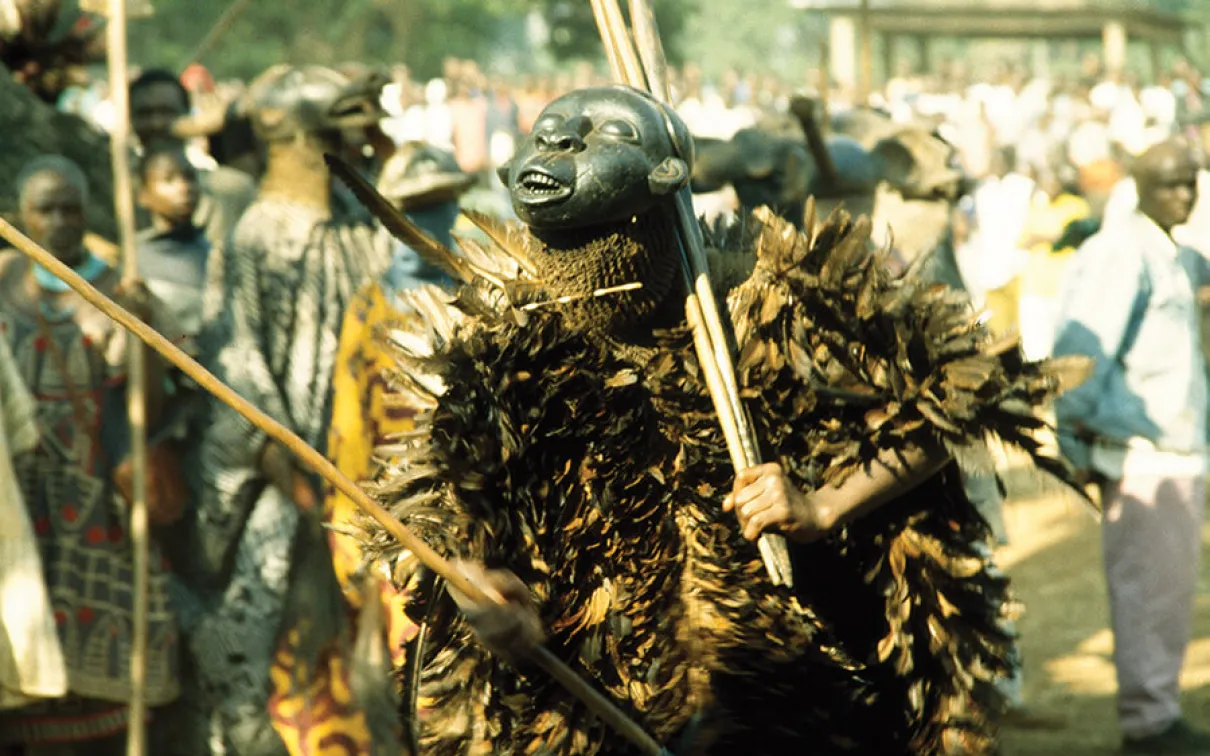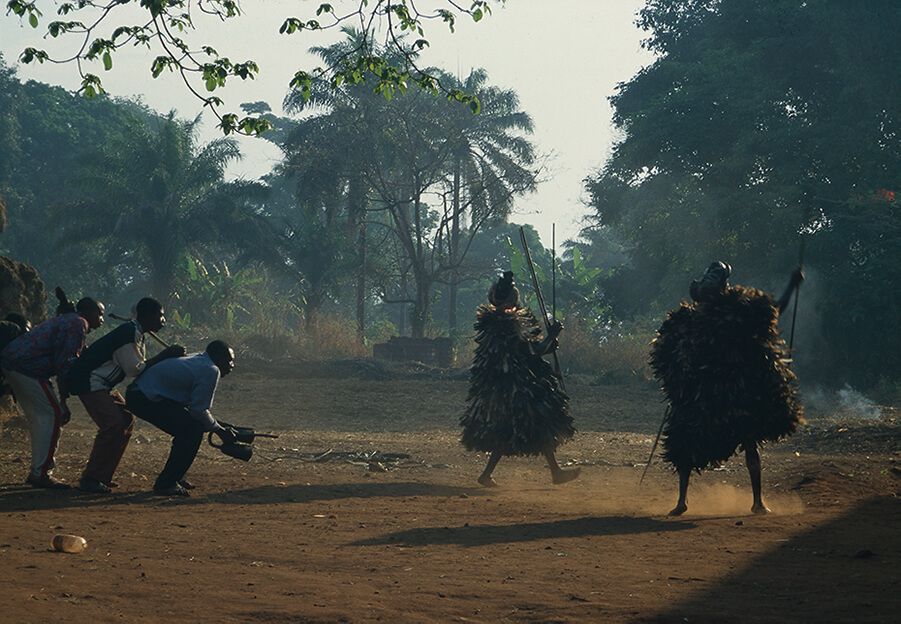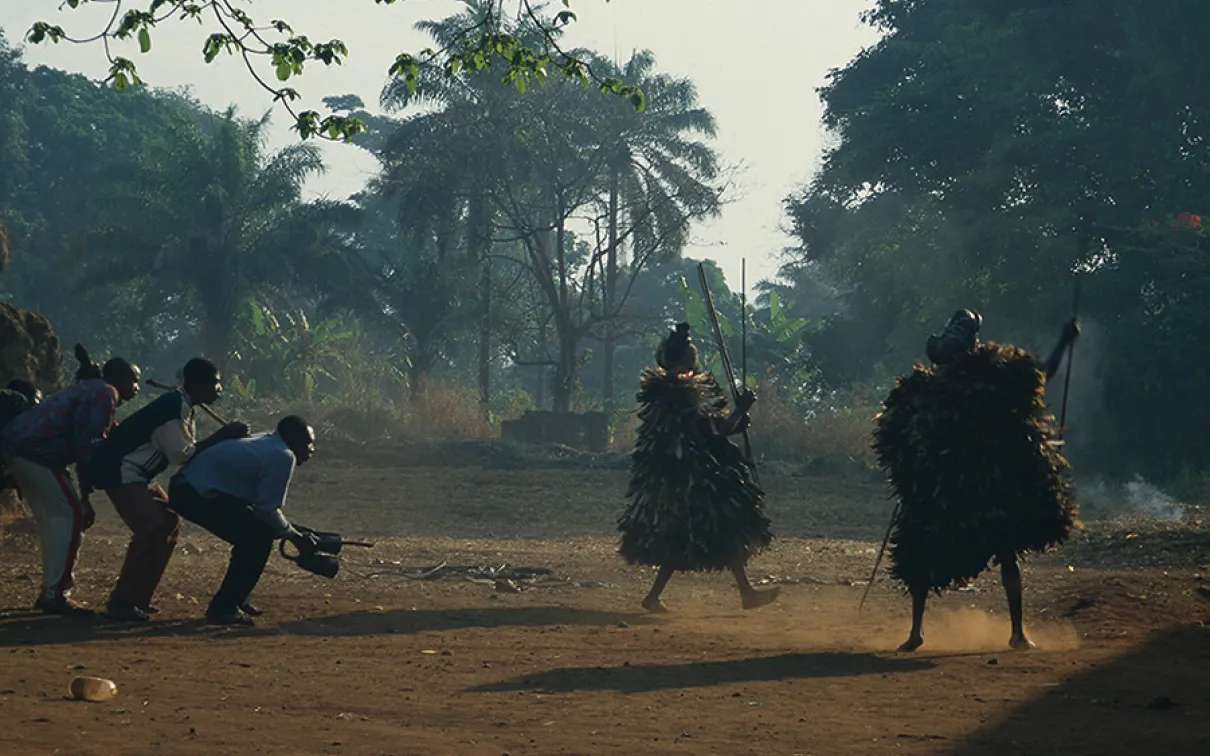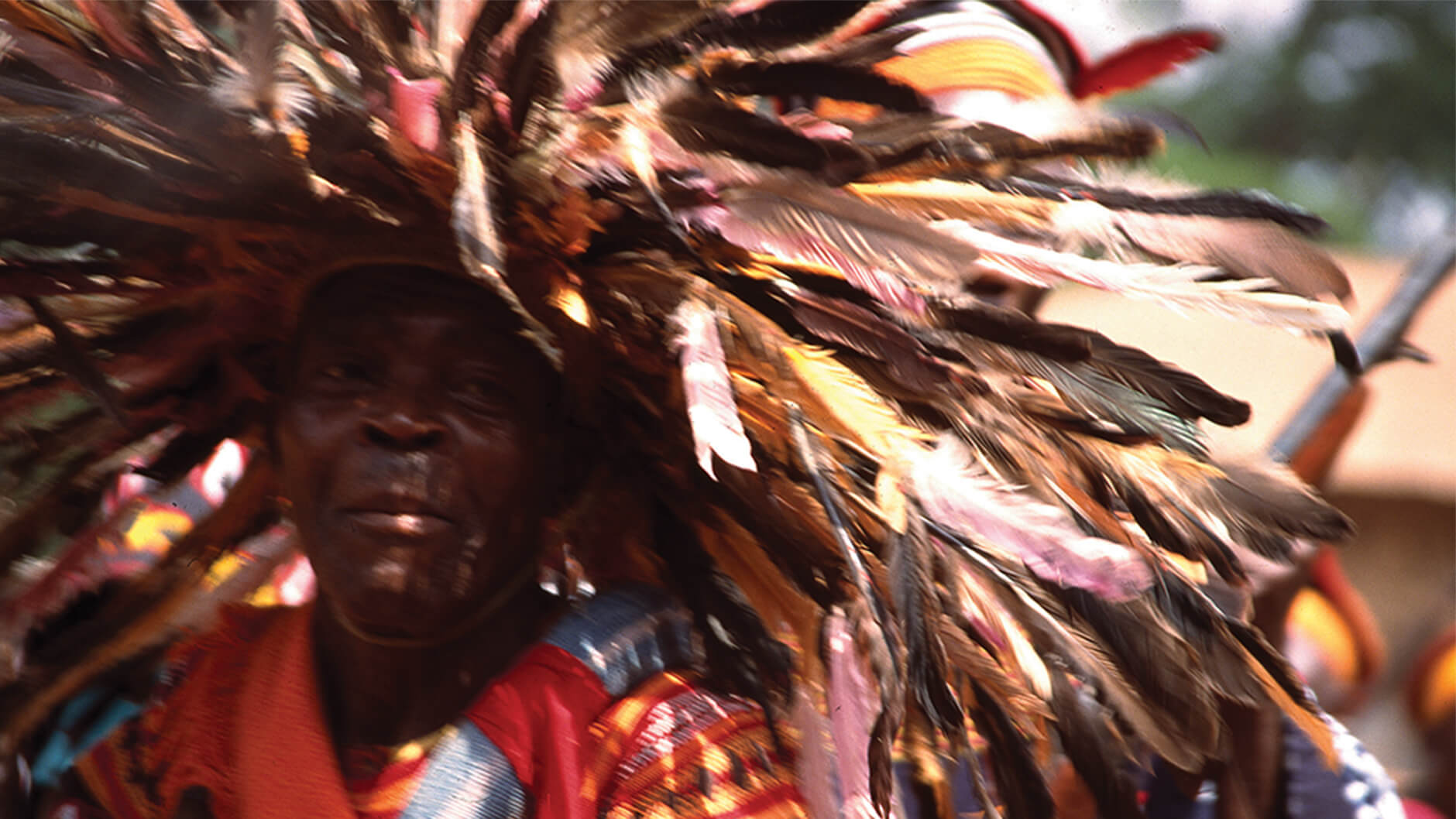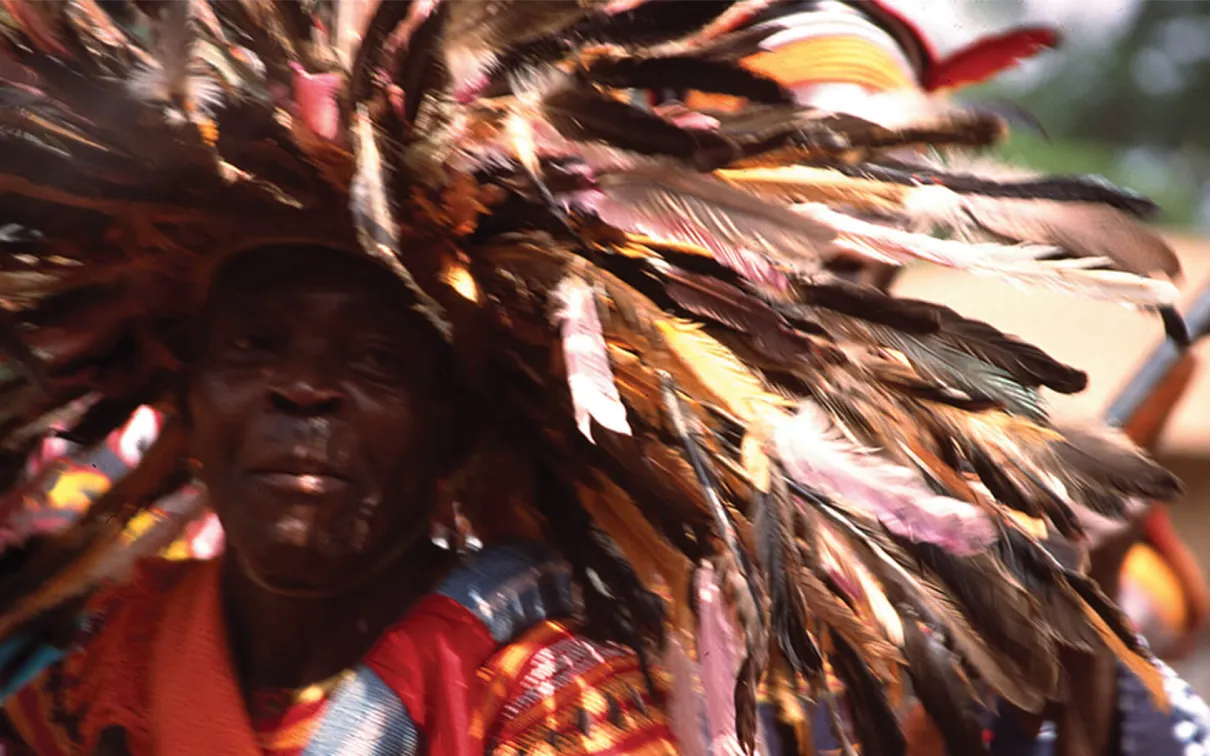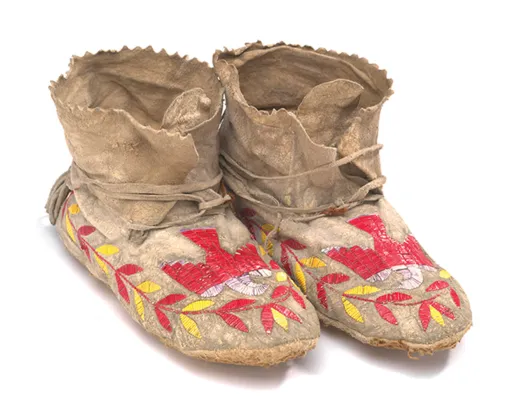Quill Power
For the people of Cameroon’s Grassfields, porcupine quills have long represented political and spiritual authority.
Published
Category
Author
In the kingdoms of the Grassfields
In the kingdoms of the Grassfields of western Cameroon, porcupine quills on garments and headdresses are a sign of the highest distinction. An item of clothing adorned with quills signifies power and social status, much like ceremonial dress in most parts of the world. But the cultural significance of quills runs much deeper. For the people of the Grassfields, quills carry a suggestion of wilderness and of the shapeshifting powers of their wearers.
In January 2012, the ROM acquired just such an article—a woven ceremonial gown and cap covered in porcupine quills from the Cameroonian Grassfields. While such objects are intrinsically beautiful and fascinating, it’s the story behind them that reveals deeper meanings, telling us what was important to the people who created and used them.
This particular gown and cap belonged
This particular gown and cap belonged to Chief Alaakeh from the Awing kingdom in the Northwest Region of Cameroon. The chief had them made in the 1970s, and until his death in 1989, he wore them at the opening rituals of his kingdom’s annual celebrations. It is not difficult to imagine the strong visual and emotional impact of someone fully clad in porcupine quills moving about the village. Meant to inspire awe and fear, quills are considered not just frightening but protective. The symbolism is clear: just as one cannot pick up a porcupine in the forest without getting hurt, in the Cameroonian Grassfields one cannot easily conquer the secret sources of power and knowledge of those entitled to wear this symbol. Individuals who wear quills are usually seen as having the strength and ability to control the forces of nature for the benefit of the community; through mystical and ritual practice, they cross the human-nature divide. This relationship between power and nature is common in other forms of Grassfields art, especially in works connected to palaces and other local ruling bodies.
Gallery 1
And it is exactly this kind
And it is exactly this kind of art that has made the Grassfields known to African art lovers. Covering the anglophone Northwest Region and part of the francophone Western Region of the Republic of Cameroon, the Cameroonian Grassfields is renowned as an art-rich region of Africa. Museums throughout Europe and in particular in Germany, France, and England—which, when colonial governments, once controlled parts of the territory—display a great number of its masks, stools, figures, pipes, ornaments, and containers.
Very densely populated since pre-colonial times, the Grassfields area is characterized by great political and linguistic fragmentation. Yet goods, artworks, and practices are circulated in a network of commercial and symbolic exchange among the separate polities.
Most of the political units in the Grassfields are structured as kingdoms ruled by a sacred monarch called the fon—chosen from possible successors within the royal lineage. Members of the royal family are affiliated with a sacred regulatory society called ngirri, whose role in most kingdoms is more ritual than political.
The fon governs alongside a council of notables, who are part of a society known as kwifo or ngumba, forbidden to men of the royal lineage. Together, the fon, the notables, and the two regula- tory societies discuss rules governing the village, usually meeting in palaces or sacred groves. Access to the political and religious hierarchy is strictly regulated based on gender—with very few exceptions, only men can take part in the public political life of the kingdom—and seniority. To become a fully recognized member of the local government and religious structure, individuals must pay substantial fees that entitle them with access to different levels of knowledge and influence within their society.
In the kingdoms of the Cameroonian Grassfields, those who are entitled to wear quills are endowed with the ability to control nature for the benefit of all.
The rules that govern wearing porcupine quills
The rules that govern wearing porcupine quills vary in the different Grassfields kingdoms. In Babessi, for instance, only the fon can wear more than one quill on his head. And the public display of such symbols is reserved for him, his mother, and a few high-ranking notables. In the mountainous kingdom of Oku, only very powerful royal individuals known as masquerades are clad in porcupine quills. Masquerades are messengers, religious figures who embody the metaphysical nature of political and spiritual authority and often take the form of ambiguous characters.
Chief Alaakeh, as one of the main ritual specialists in his village, was entitled to wear a gown very similar to those worn by ngirri masquerades in Oku. To commence annual celebrations, he would appear in public wearing his quill-covered gown and cap, dancing through the village and performing a cleansing ritual meant to protect the kingdom from evil forces and spirits.
In the Grassfields, acquiring authority means acquiring the knowledge and wisdom to control the potentially dangerous forces of nature and to ensure that the community is protected. This ability is usually gained through a lengthy initiation. When a notable or a high-ranking regulatory society member dies, his successor—chosen, by his family, from among his male children—inherits not only the family wealth and responsibility, but also the potential to acquire memberships and political titles. This type of inheritance is not always something the kingdom’s young men embrace. Being involved in the political and ritual hierarchy requires a deep engagement in the affairs of the palace and local governance, and a considerable investment of time and resources to acquire the complex and layered knowledge that distinguishes title holders and ritual specialists.
When Chief Alaakeh died in 1989
When Chief Alaakeh died in 1989, the family appointed a suc- cessor to his wealth, responsibility, and social status. But the successor, one of Alaakeh’s sons, was not interested in acquiring his father’s full status. And so Alaakeh’s gown was stored for more than 10 years, while the position remained vacant.
When, in 2008, an art dealer named Samuel Ibrahim Njbogho Nchoutdiyiyi from the regional capital, Bamenda, learned about the gown that had fallen into disuse, he set about acquiring it. A specialist in antiquities and ethnographic material from the Grassfields region, Nchoutdiyiyi realized that buying such a symbolic and ritually powerful garment would not be easy. The gown belonged to Alaakeh’s successor, yet its function and significance affected a constituency much broader than the family. His efforts came to fruition two years later, when Alaakeh’s successor and the council of notables sent word that they would agree to sell the gown for monetary compensation and a replacement gown covered in feathers.
In the last 15 years this sell-and-replacement practice has become common for local art dealers and a way for local groups, associations, or families in the Grassfields to raise funds for per- sonal or communitarian projects. Instead of disposing of meaningful cultural objects, community members have them replaced with new items that better reflect shifts in society.
Since feathers are another Grassfields symbol of prestige, replacing a porcupine-quill gown with a feather gown is meaningful. The red feather of the turaco bird, for instance, is a sign of power, both political and spiritual, assigned by the fon and displayed on the cap by titleholders and important personalities. Gowns covered in domestic chicken and duck feathers are usually worn by the masquerades of kwifo or ngumba societies—and by mabuh, the spear-carrying messenger and crime punisher of a village, whose appearance usually sends women and uninitiated males running to hide in the bush. Feathers and quills also have a similarly impressive appearance when the wearer dances.
A new feather gown has renewed the reality of the performance, restoring meaning in a ritual that was destined to disappear.
For Alaakeh’s successor
For Alaakeh’s successor, the new feather gown has renewed the reality of the performance. Quite likely, the shift to feathers has revived and restored meaning in a ritual that was otherwise destined to disappear, because of the difficulty of acquiring the knowledge and power associated with quills. As in any culture, traditions in the Awing kingdom morph and transform. While certain traditions and practices are lost or remain dormant, others gain momentum and inform the way people live their culture in the everyday.
Selling and replacing objects ensures a renewable source of used traditional artworks for a market that is the main source of income for thousands of people in the region. It also encourages artists and craftspeople to continue producing high-quality work for local use, thus preserving the skills that ensure an effective renewal of the material display of local political and spiritual power. The porcupine-quill gown is the trace of a recent past that somehow lost its relevance. Its sale does not mark an end but a new beginning.
Silvia Forni
Silvia Forni is Senior Curator of Global Africa at ROM.
